The rapid rise of Bitcoin and other cryptocurrencies has ignited a gold rush for investors, but navigating the volatile world of digital assets can be daunting. Enter Bitcoin ETFs, a groundbreaking investment vehicle that allows anyone to gain exposure to Bitcoin’s price movements without actually owning the cryptocurrency itself.
What is an ETF?
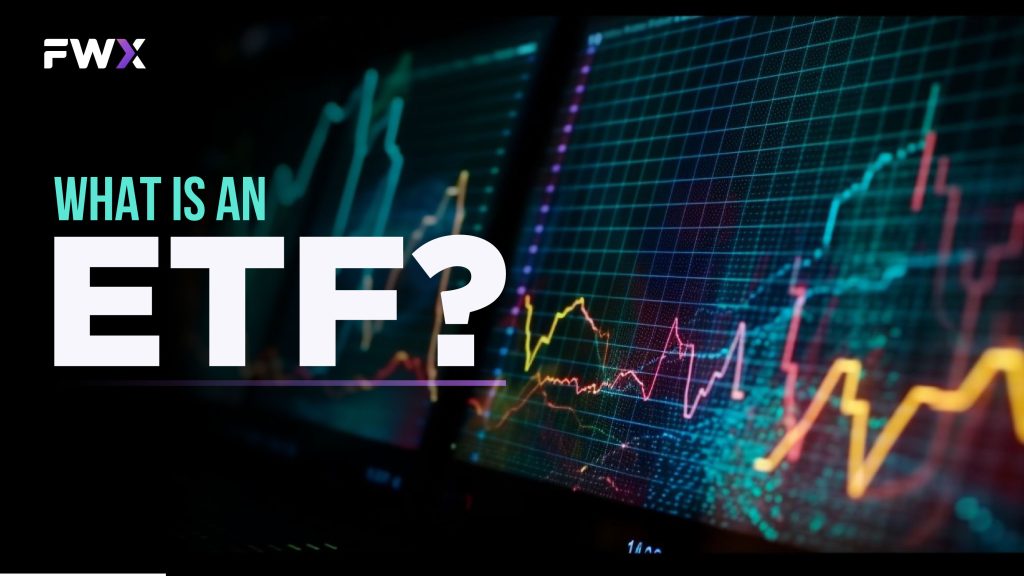
An ETF, or exchange-traded fund, is a basket of securities that trades on a stock exchange like a regular stock. This means that you can buy and sell ETFs throughout the day, just like you would with any other stock. However, unlike individual stocks, which represent ownership in a single company, ETFs represent ownership in a pool of assets. This could include things like stocks, bonds, commodities, or even other ETFs.
One of the main benefits of investing in ETFs is that they provide diversification. This means that you don’t have to put all of your eggs in one basket. Instead, you can spread your investment across a variety of assets, which can help to reduce your risk.
Another benefit of ETFs is that they are typically more cost-effective than mutual funds. This is because ETFs are passively managed, which means that they don’t have a team of managers trying to beat the market. As a result, ETFs typically have lower fees than mutual funds.
Overall, ETFs are a great way to invest in a variety of assets without having to do a lot of research. They are also relatively low-cost and easy to trade. If you’re looking for a way to diversify your portfolio and reduce your risk, ETFs are a great option to consider.
What is a Bitcoin ETF?
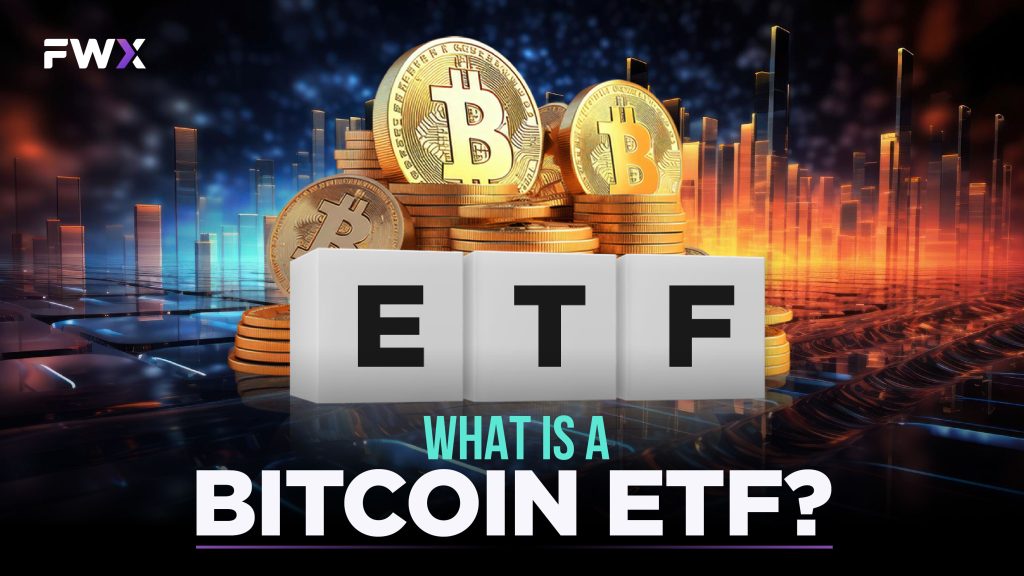
A Bitcoin ETF is a specific type of ETF designed to track the price of Bitcoin. Unlike directly owning Bitcoin, it doesn’t hold the cryptocurrency itself, but rather uses various instruments like Bitcoin futures contracts or derivatives to mirror its price movements. This allows investors to gain exposure to Bitcoin’s potential appreciation without the complexities and risks of directly holding the cryptocurrency.
Key points to remember about Bitcoin ETFs:
- They don’t actually hold Bitcoin: You don’t directly own the underlying cryptocurrency, which can affect your control and potential for long-term appreciation.
- Offer accessibility: They provide an easier entry point for investors who want exposure to Bitcoin without the technical hurdles of owning it directly.
- Come with fees: Like any ETF, Bitcoin ETFs charge management fees, reducing your returns compared to direct ownership.
- Not immune to volatility: Bitcoin’s inherent volatility translates to significant price fluctuations for these ETFs.
History of Bitcoin ETF
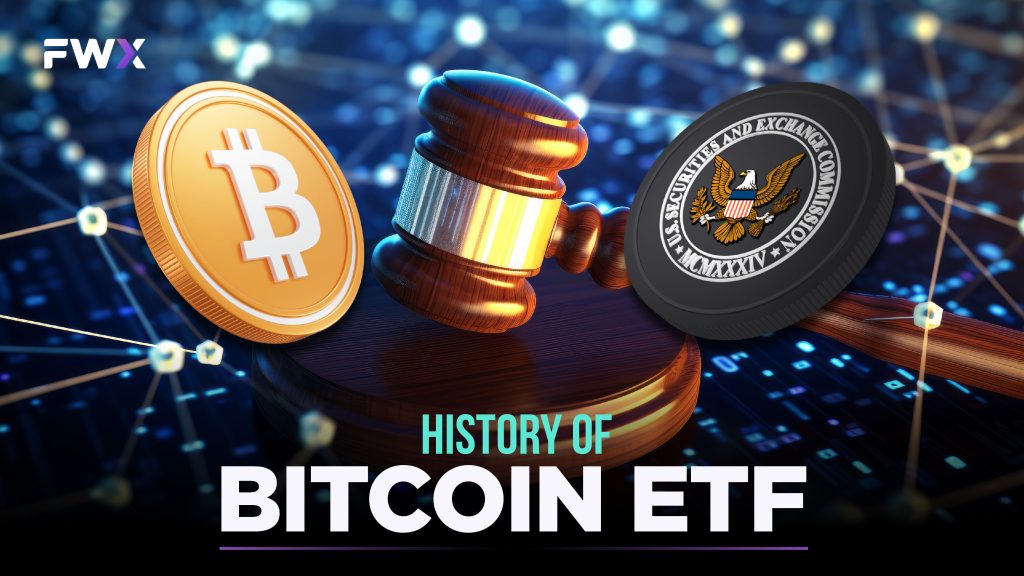
The story of Bitcoin ETFs is a captivating chronicle of ambition, innovation, and regulatory hurdles. From early proposals to the first approved funds, let’s take a global journey across the timeline of these revolutionary investment vehicles:
Early Glimmers (2013-2017)
- In 2013, the Winklevoss twins, Cameron and Tyler, filed the first-ever Bitcoin ETF proposal with the US Securities and Exchange Commission (SEC). It faced concerns about market manipulation and volatility.
- 2014: The first Bitcoin ETF, the Bitcoin Investment Trust (BIT), launches in Canada. It trades over-the-counter (OTC) and becomes a popular option for early Bitcoin enthusiasts.
- 2016-2017: A flurry of Bitcoin ETF proposals flood the SEC, but all are rejected due to concerns about the underlying Bitcoin market’s immaturity and potential for manipulation.
A Turning Point (2021)
- October 2021: The tide turns! The ProShares Bitcoin Strategy ETF (BITO) and Valkyrie Bitcoin ETF (BTF) become the first Bitcoin futures-based ETFs approved in the US, marking a historic moment for the cryptocurrency industry.
- 2022: More Bitcoin ETFs launch in the US, including the VanEck Bitcoin Strategy ETF (GBTC) and the Grayscale Bitcoin Trust (GBTC) converting into an ETF.
How does Bitcoin ETF work?
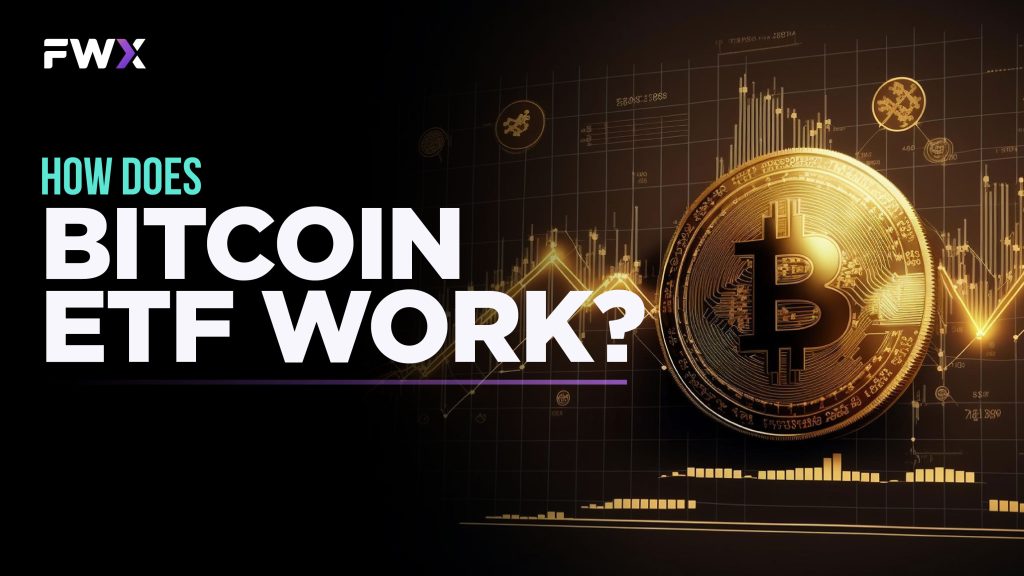
1. Bitcoin Futures ETFs: These ETFs don’t directly hold Bitcoin but instead track the price of Bitcoin futures contracts. Here’s how it works:
- Investment: You buy shares of the ETF on a traditional stock exchange like the NYSE.
- Underlying Asset: The ETF buys and sells Bitcoin futures contracts on the Chicago Mercantile Exchange (CME). These contracts are essentially agreements to buy or sell Bitcoin at a specific price in the future.
- Price Tracking: The price of the ETF shares fluctuates based on the price of the underlying futures contracts, which should roughly track the price of Bitcoin itself. However, there can be discrepancies due to factors like basis risk (the difference between the futures price and the expected spot price at the contract’s expiry).
- Benefits: Easier regulatory approval, potentially lower fees, accessible through existing brokerage accounts.
- Drawbacks: Tracking error due to futures contracts, no direct ownership of Bitcoin, limited control over investment.
2. Spot Bitcoin ETFs (Not currently available in the US): These ETFs directly hold Bitcoin, aiming to track its spot price more closely. Here’s how they work:
- Investment: You buy shares of the ETF on a traditional stock exchange.
- Underlying Asset: The ETF holds actual Bitcoin in secure digital wallets.
- Price Tracking: The price of the ETF shares fluctuates based on the real-time price of Bitcoin.
- Benefits: Closer tracking to Bitcoin price, potential for staking or other direct uses of Bitcoin.
- Drawbacks: May face regulatory hurdles, potentially higher fees due to custody costs, limited availability.
Types of Bitcoin ETFs
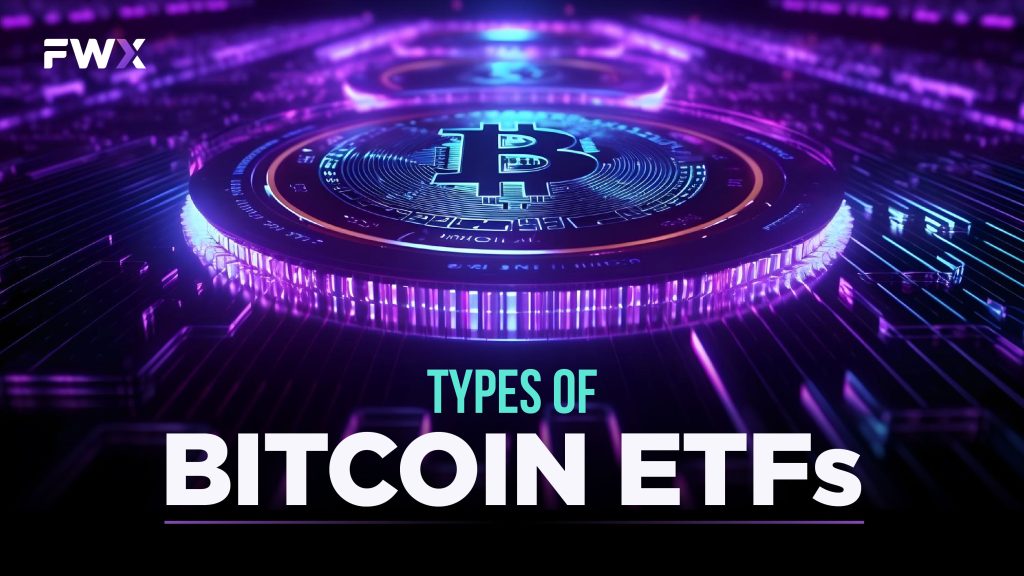
Exploring the realm of Bitcoin, investors encounter a diverse array of options, and Bitcoin ETFs provide an intriguing perspective without directly immersing into the digital landscape. Here, five distinct paths diverge:
1. Bitcoin Spot ETFs: These directly hold actual Bitcoin, making them the closest way to mimicking the asset’s price movements. Ideal for investors seeking pure Bitcoin exposure with minimal tracking divergence. Think of them as a secure vault you own a piece of, its value tied directly to the Bitcoin stored within.
2. Bitcoin Futures ETFs: Instead of holding physical Bitcoin, these leverage contracts to track its price. Advantages include potentially lower costs and quicker regulatory approval. However, they introduce counterparty risk and potential tracking discrepancies. Imagine betting on the future price of Bitcoin through a network of contracts, its outcome influencing the ETF’s value.
3. Bitcoin Mining ETFs: These don’t directly hold Bitcoin but invest in companies involved in Bitcoin mining, providing exposure to the industry’s performance. A good option for those aiming to benefit from the growth of Bitcoin mining infrastructure without the volatility of the cryptocurrency itself. Think of them as owning a portfolio of mining rigs, your returns tied to the collective success of these operations.
4. Short Bitcoin ETFs: These instruments bet against Bitcoin, profiting when its price falls. Ideal for investors who anticipate a Bitcoin decline or want to hedge other Bitcoin-related positions. Be aware of the risks involved in shorting an asset, including potentially unlimited losses if the price rises unexpectedly. Imagine borrowing Bitcoin, selling it high, and hoping to buy it back lower to return it and pocket the difference.
5. Long Bitcoin ETFs: While seemingly redundant with Bitcoin Spot ETFs, Long Bitcoin ETFs aim to amplify Bitcoin’s price movements, potentially offering leveraged returns. These come with significantly higher risks, including the possibility of losses exceeding your initial investment if the price falls. Think of them as turbo-charging your Bitcoin exposure, increasing both potential gains and losses.
Bitcoin ETFs vs. direct investments in Bitcoin
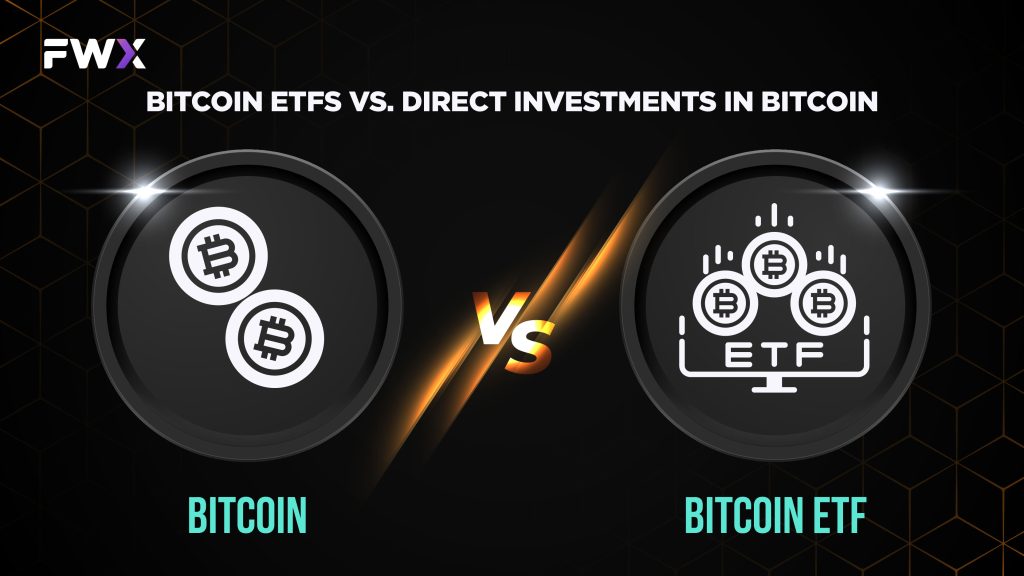
Both Bitcoin ETFs and direct investments in Bitcoin offer exposure to the world’s leading Investing in Bitcoin can be done through various methods, including directly purchasing Bitcoin or investing in Bitcoin exchange-traded funds (ETFs). Here are some key differences between the two approaches:
Ownership and Custody:
- Direct Investment: When you buy Bitcoin directly, you own the actual cryptocurrency, and you are responsible for storing and securing it. This involves using a digital wallet, which can be a software wallet, hardware wallet, or another secure storage method.
- ETFs: With Bitcoin ETFs, you don’t own the physical Bitcoins directly. Instead, you own shares of the ETF, which represents ownership in a fund that holds Bitcoin. The custody and storage of the underlying Bitcoins are handled by the fund.
Convenience and Accessibility:
- Direct Investment: Buying Bitcoin directly requires setting up a digital wallet and using a cryptocurrency exchange. This process may be perceived as more complex for some investors.
- ETFs: Investing in Bitcoin through ETFs is more convenient for traditional investors who may be more familiar with brokerage accounts. It provides exposure to Bitcoin without the need to manage private keys or navigate cryptocurrency exchanges.
Regulatory Environment:
- Direct Investment: The regulatory environment for direct Bitcoin investment varies by country and can be subject to changes. Some jurisdictions have specific regulations for cryptocurrency exchanges and wallet providers.
- ETFs: Bitcoin ETFs, being financial instruments, are subject to regulatory oversight. The approval and regulation of Bitcoin ETFs depend on the financial regulatory authorities in each country.
Risk and Volatility:
- Direct Investment: Investing directly in Bitcoin exposes you to the full volatility of the cryptocurrency market. Prices can be highly volatile, and the value of your investment can fluctuate significantly in a short period.
- ETFs: While Bitcoin ETFs also expose investors to the price movements of Bitcoin, the impact may be somewhat mitigated, and the risk may be spread across the fund’s holdings. However, the ETF itself can still experience price volatility.
Fees:
- Direct Investment: Fees associated with buying, selling, and transferring Bitcoin directly can vary depending on the exchange and wallet service you use.
- ETFs: Investors in Bitcoin ETFs may be subject to management fees and other expenses associated with the fund. These fees can impact the overall returns of the investment.
- Direct Investment: The liquidity of your Bitcoin holdings depends on the liquidity of the exchange you use. Some exchanges may have lower liquidity than others, affecting your ability to buy or sell at desired prices.
- ETFs: ETFs are traded on traditional stock exchanges, and their liquidity is influenced by market demand. Generally, ETFs may offer better liquidity compared to less liquid cryptocurrency exchanges.
The benefits and risks of a Bitcoin ETF
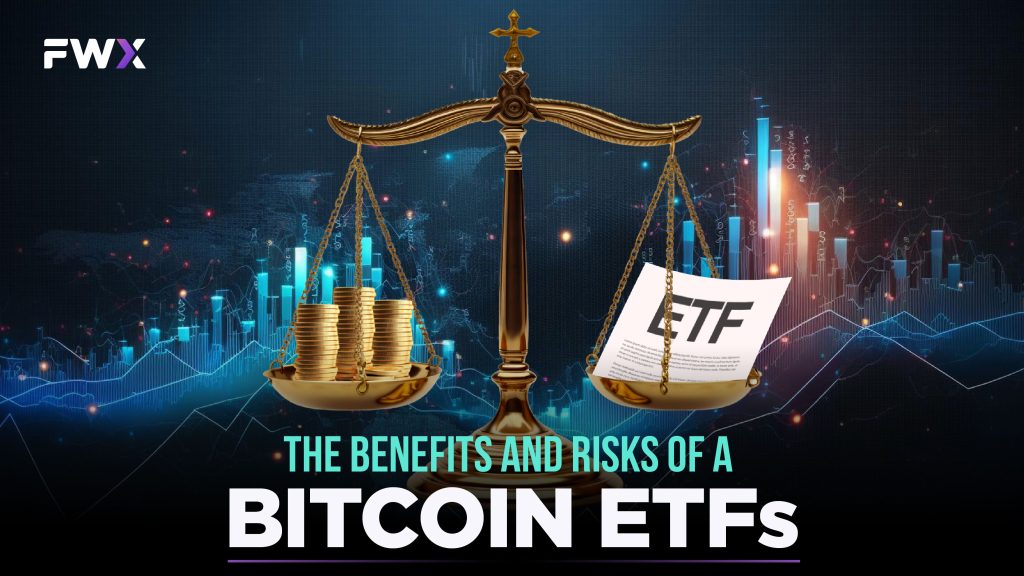
Benefits of a Bitcoin ETF:
- Accessibility: You can invest in Bitcoin through traditional investment platforms like brokerage accounts, making it easier for non-technical investors to gain exposure.
- Regulation: Bitcoin ETFs are subject to regulations, offering some investor protection compared to the less regulated world of cryptocurrency exchanges.
- Diversification: Some Bitcoin ETFs invest in a basket of Bitcoin-related assets, like mining companies and blockchain technology firms, providing diversification beyond just the price of Bitcoin itself.
- Transparency: ETFs are typically more transparent than directly owning Bitcoin, with readily available information about their holdings and investment strategies.
- Liquidity: Bitcoin ETFs generally trade on major stock exchanges with high liquidity, making it easier to buy and sell shares compared to directly purchasing Bitcoin on cryptocurrency exchanges.
- Potentially lower fees: While some Bitcoin ETFs have high expense ratios, they may be lower than the combined fees of buying and storing Bitcoin directly on an exchange.
Risks of a Bitcoin ETF:
- Tracking error: Bitcoin futures ETFs, which are currently the only type available in the US, may not perfectly track the price of Bitcoin due to the nature of futures contracts. This can lead to discrepancies in returns between the ETF and the underlying asset.
- Lack of direct ownership: With an ETF, you own shares of the fund, not the underlying Bitcoin, which limits your access to certain benefits like staking or using Bitcoin for transactions.
- Limited control: You have less control over your investment compared to holding Bitcoin directly, as the ETF’s management team makes investment decisions.
- Volatility: Bitcoin is a highly volatile asset, and its price can fluctuate significantly. This volatility is reflected in Bitcoin ETFs, making them risky investments.
- Regulation: While regulations offer some protection, they can also limit innovation and flexibility in the Bitcoin market.
- Fees: Some Bitcoin ETFs have high expense ratios, which can eat into your returns over time.
In Conclusion, Bitcoin ETFs present a fascinating bridge between the established world of finance and the dynamic realm of cryptocurrency. While not without their risks, they offer a regulated and accessible path for investors to tap into the potential of Bitcoin. Whether you’re a seasoned pro or a curious newcomer, understanding the intricacies of Bitcoin ETFs can empower you to make informed decisions about your investment journey. Remember, thorough research and careful consideration are key to navigating the exciting, yet sometimes turbulent, waters of Bitcoin.


